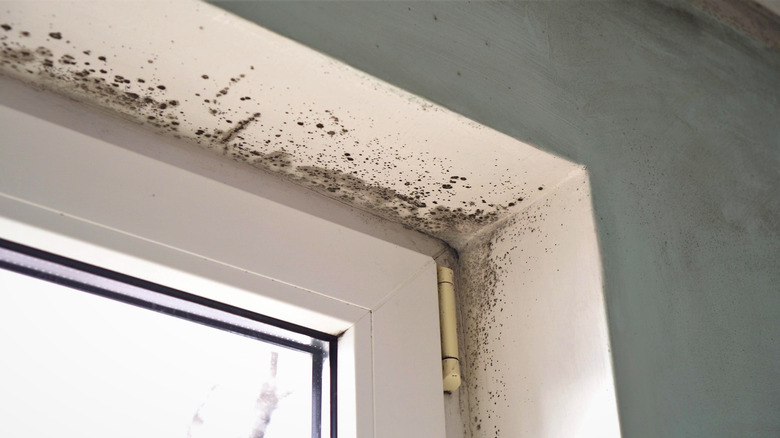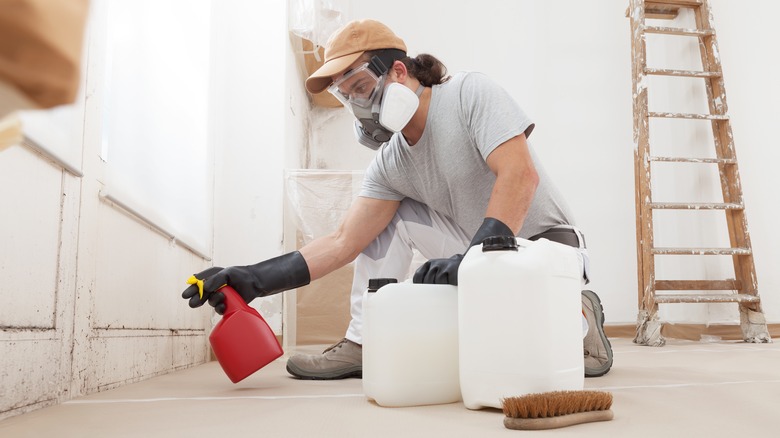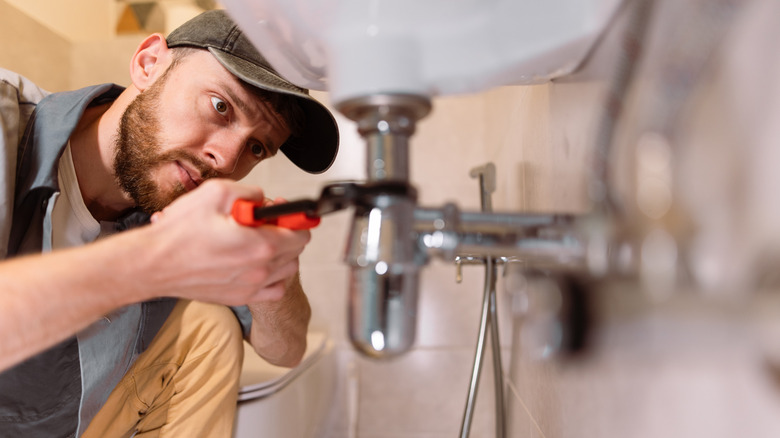Telltale Signs It's Time To Hire A Professional To Get Rid Of Your Mold Problem
Experts estimate that almost half of the homes in the United States contain mold, which is a worrisome assessment considering that fungi spores can cause health problems ranging from allergies to breathing problems to respiratory infections. Mold also has the potential to cause damage to a home's structure, particularly when spores land on wood, fabric, and other porous surfaces, get between walls, spread inside support structures, or multiply in hard-to-detect areas such as inside attics or crawl spaces.
There are ways to identify mold and get rid of it for good. This is especially true if you can see or smell it. Some of the easiest ways to clean mold include using bleach, lemon, vinegar, tea tree oil, hydrogen peroxide, and toothpaste when mold forms in tile grout or appears as dirty spots on a wall. But, other times, the problem may be so serious that a professional needs to come in, including when mold covers a large area or appears sooty or slimy.
When you can do it yourself vs when you need experts
If mold is contained within an area of less than 10 square feet, you can do the job yourself, advises the U.S. Environmental Protection Agency. However, do not tackle the project if you have a known allergy or sensitivity to mold. The mold may need to be professionally eradicated after a flood or a plumbing issue that spreads to hard-to-reach areas, and the mold covers more than a 3-foot-by-3-foot area. If you sense mold but don't see it, you can also hire a company to do an inspection, which usually involves air and stain tests.
The EPA recommends hiring a contractor with experience in cleaning up mold and contacting their references to ensure the company follows specific guidelines, including the EPA's own framework for remediation in schools and commercial buildings. States like New York offer further guidance; under the state's Department of Labor rules, mold remediation companies must be properly trained and licensed. One company should do the initial mold assessment and come in after cleanup has been done by an entirely separate company to make sure the work was done right, a system creating checks and balances for customers.
How to get ahead of the problem
If you do experience a flood in the home, dry water-damaged areas within two days; however, mold can also be caused by moisture from sources such as roof leaks, damp basements, improper ventilation, and other common household issues. The most important advice from house professionals is to make sure that you deal with the source of the problem, including plumbing leaks or air duct issues.
You can prevent mold from entering your home in a number of ways. Easy solutions are to intermittently open windows, fix leaks, clean gutters, and reduce clutter — all of which should reduce moisture. You can also repaint areas with mold-inhibiting paint, give bathrooms a mold-busting scrub, keep windows dry and dust-free, replace carpets in the basement, clean exhaust fans, insulate the home with the proper material, use dehumidifiers, and turn up the heat in the winter. Also, make sure to monitor your home's humidity, which should be between 30% and 50%.


